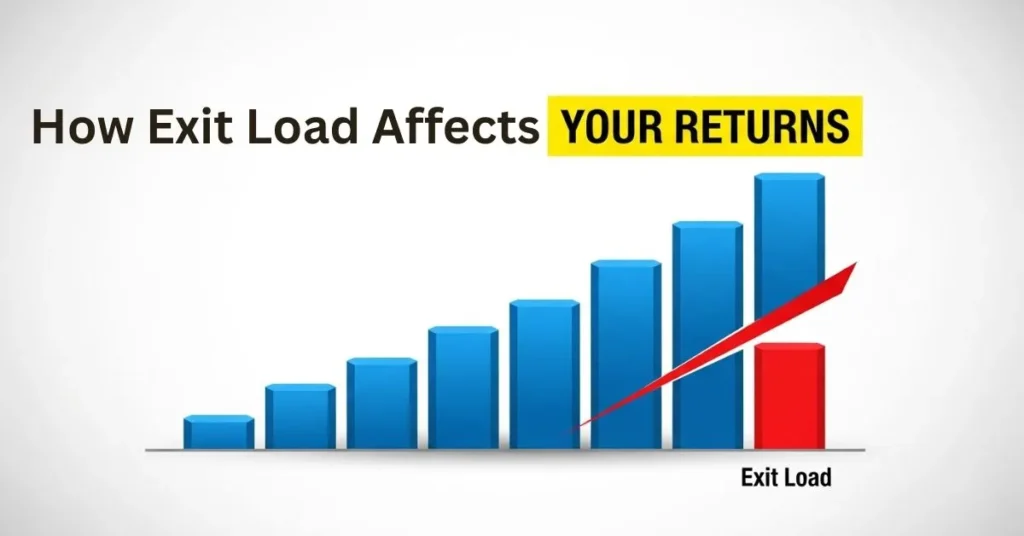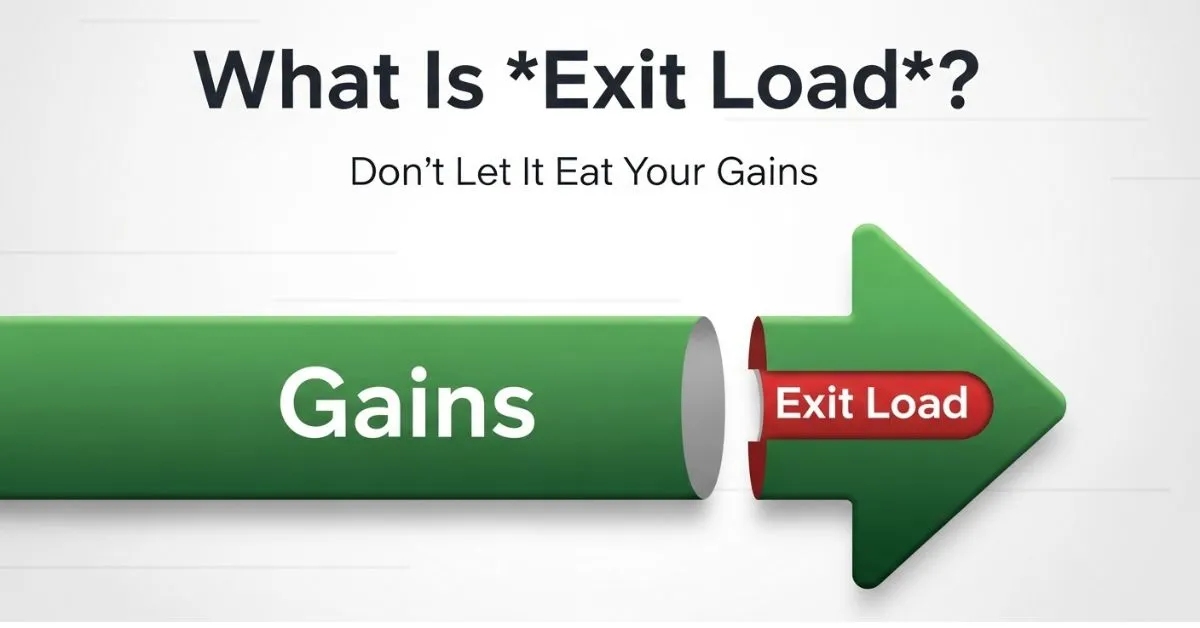An exit load in mutual funds is basically an early withdrawal fee. When you invest in a mutual fund, you agree to stay invested for a certain period. If you decide to sell your units before this time , the fund house will deduct a small percentage from your money as an exit load. It’s their way of encouraging you to stick to your plan.
The main purpose of an exit load in mutual funds is to promote long-term investing. It helps protect the fund from the disruption of investors frequently moving money in and out. This stability allows the fund manager to focus on achieving steady growth for everyone. So, while it might feel like a penalty, it’s really a measure designed to benefit all investors in the long run.

Table of Contents
Types / Structures of Exit Load In Mutual Funds:
Exit load in mutual funds aren’t all the same. Think of them like different penalty systems. The most common is a simple flat fee—say, a 1% charge if you exit within a year.
But some funds use a sliding scale to reward you for patience. For example, they might charge 2% if you leave in the first three months, but only 1% if you leave between months four and six. After a full year, it often drops to zero. You might also see the term “CDSC,” which is just a fancy name for this kind of decreasing fee structure.
The good news is that many funds designed for short-term needs, like liquid funds, often have no exit load at all. The golden rule is simple: always glance at the Scheme Information Document (SID) before you invest. That’s where you’ll find the exact rules laid out in black and white.
Earlier we wrote about: Best Term Plan For 1 Crore
How Exit Load Affects Your Returns?

Now, let’s talk about the real-world impact—how this fee touches your returns. The effect of an exit load on your mutual fund returns is direct and immediate; it simply reduces the final amount that lands in your bank account. Your net return is always calculated on the proceeds after all deductions, not on the paper value.
Consider this: if your ₹50,000 investment grows to ₹60,000 in just eight months, that’s a handsome 20% gross return. However, a 1% exit load (₹600) would bring your net gain down. This single charge can significantly alter your effective return, especially if the holding period was short. This is a fundamental reason why long-term, patient investing often outperforms a strategy of constant churning. The exit load in mutual funds is a built-in reminder to think long-term.
How to Avoid Exit Load in Mutual Funds?
The good news is that avoiding exit load in mutual funds is completely within your control – it just takes a little planning. Think of it like this: if you know you might need your money within a year, simply choose funds with shorter exit load periods or no exit load at all. Many liquid and debt funds are perfect for this purpose.
For long-term investments, the simplest approach is to just wait it out. Check your fund’s document to know the exact exit load period – usually 12 months – and avoid redeeming during this window. If you’re investing through SIPs, remember you can redeem your older units first (those that have completed the exit load period) while leaving newer investments untouched. It’s like having an emergency exit that doesn’t charge you a penalty.
The following table summarizes the key strategies to keep your returns safe:
| Smart Strategy | How It Protects Your Returns |
|---|---|
| Check the SID Before Investing | Ensures you know the exact exit load structure and can match it with your investment horizon. |
| Hold for the Required Period | The simplest and most effective way to avoid the load completely. |
| Choose Low/Zero Exit Load Funds for Short-Term Goals | Provides liquidity without penalties for known, near-future expenses. |
| Redeem Older SIP Units First | Leverages the holding period of individual tranches to minimize or eliminate the charge. |
Conclusion About Exit Load In Mutual Funds:
At the end of the day, an exit load in mutual funds isn’t just a fee—it’s a nudge to be a more disciplined investor. While it might seem annoying if you get charged, remember it’s there to protect everyone in the fund, including you in the long run.
The key takeaway? Always check the exit load details before investing, match them with your financial timeline, and try to wait out that initial period. It’s one of those simple habits that can help you keep more of your returns and build wealth more effectively over time.
Disclaimer: This content is for educational purposes only. Mutual fund investments are subject to market risks. Please consult with your financial advisor before making any investment decisions.
FAQs About Exit Load In Mutual Funds:
1.What is a good exit load for a mutual fund?
A good exit load is typically 1% or less if redeemed within 1 year; many funds charge zero after that. Lower exit loads favor short-term flexibility without penalizing early withdrawals.
2.How to avoid exit load in mutual fund?
To avoid exit load, hold the fund beyond the minimum exit load period—usually 12 months for equity funds. Also, use the FIFO method when redeeming SIP units to sell older, load-free units first.
3.Which mutual fund has 0 exit load?
Liquid funds like Aditya Birla Sun Life Liquid Fund, Axis Liquid Fund, and Edelweiss Liquid Fund have zero exit load after 7 days. They’re ideal for short-term parking with high liquidity and minimal penalties
4.What are the disadvantages of exit load?
Exit load reduces your net returns if you redeem early, especially in short-term investments. It also discourages liquidity, limiting flexibility during market corrections or emergencies.
